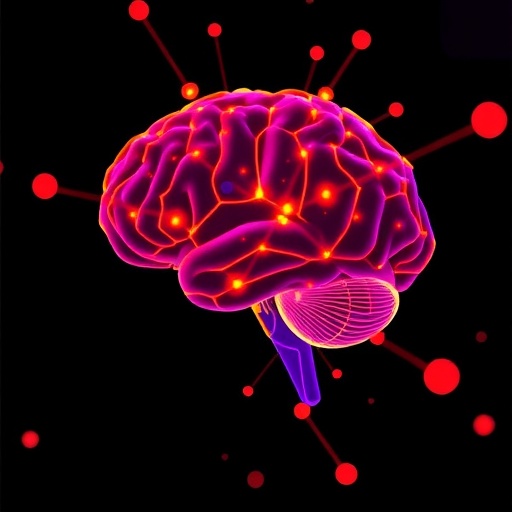In the relentless pursuit to refine brain-machine interfaces, a groundbreaking study has emerged, unveiling a novel approach to enhance the longevity and stability of intracortical microelectrode recordings. For decades, neuroscientists and engineers have grappled with the challenges posed by the foreign body response that hinders the performance of implanted neural devices. Recent research led by Li, Hartzler, Menendez-Lustri, and their colleagues offers a transformative solution through the use of dexamethasone-loaded platelet-inspired nanoparticles, marking a substantial leap forward in neurotechnology.
Intracortical microelectrodes are pivotal tools in neuroscience, enabling high-fidelity recording of neuronal activity with great temporal and spatial accuracy. However, their use is significantly limited by inflammatory reactions that degrade signal quality over time. The implantation triggers a cascade of immune responses, including microglial activation and astrocytic scarring, leading to progressive device failure. Efforts to mitigate these effects have traditionally involved systemic administration of anti-inflammatory drugs or surface modifications of the devices, but these approaches carry limitations in efficacy and potential systemic side effects.
The novel strategy devised in this study circumvents these challenges by harnessing the body’s own platelet mechanisms, capitalizing on platelets’ inherent ability to home to injury sites and modulate inflammation. By engineering nanoparticles that mimic platelet properties and loading them with dexamethasone—a potent corticosteroid with anti-inflammatory actions—the researchers designed a delivery system that targets the neural interface microenvironment with remarkable precision and sustained release.
One of the critical innovations in this work is the biomimetic design of the nanoparticles. The platelet-inspired nanoparticles replicate key functional domains of platelets, enabling specific adhesion to the neurovascular injury milieu immediately following microelectrode implantation. This targeted adhesion ensures a high local concentration of dexamethasone precisely where inflammation is most intense, minimizing off-target exposure and enhancing therapeutic efficacy.
The physicochemical properties of these nanoparticles were meticulously optimized to achieve controlled dexamethasone release over extended periods, addressing a significant unmet need. Conventional drug delivery methods often fail to maintain therapeutic drug levels at the implant site longitudinally, resulting in transient anti-inflammatory effects that are insufficient to counter the chronic foreign body response. In contrast, these platelet-mimetic carriers provide a sustained release profile, which the study demonstrates correlates with markedly reduced immune activation and glial scar formation.
Electrophysiological assessments in animal models showcase striking improvements in the quality and stability of neural recordings with the use of these dexamethasone-loaded nanoparticles. The signal-to-noise ratio, a crucial metric determining the fidelity of neuronal signal acquisition, was substantially elevated and maintained over longer durations compared to control implants. This outcome is indicative of preserved neuronal health and decreased immune-mediated electrode degradation.
Beyond measuring neuronal signals, the researchers conducted thorough histological analyses to elucidate the microenvironmental changes induced by the treatment. Markers of neuroinflammation, including activated microglia and reactive astrocytes, were significantly suppressed in neural tissue surrounding the electrodes treated with platelet-inspired nanoparticles. This attenuation of the classical inflammatory cascade aligns with improved functional outcomes, highlighting the therapeutic potential of this approach to modulate the brain’s immune landscape after device implantation.
An additional advantage of this platform is the potential versatility and adaptability of the nanoparticle design. By altering surface ligands or cargo molecules, these vehicles could be tailored to deliver a range of therapeutic agents, from neurotrophic factors to gene-editing components, further broadening their applicability in neuroengineering and regenerative medicine.
The implications of this technology extend far beyond basic science laboratories. Reliable, long-term brain interfaces are vital to clinical applications such as neuroprosthetics, brain-computer interfaces, and advanced neuromodulation therapies. The enhancement of signal stability and reduction of adverse immune reactions promise to elevate patient outcomes, reduce device revision surgeries, and accelerate the translation of neural technologies into everyday clinical practice.
Moreover, the platelet-inspired nanoparticle strategy exemplifies a trend toward bio-inspired engineering, where natural biological processes inform the design of next-generation therapeutics and devices. This approach leverages millions of years of evolutionary optimization, yielding sophisticated, context-sensitive interventions that outperform traditional synthetic materials or systemic drug regimens.
Despite the promising findings, the authors acknowledge that further translational research is necessary. Questions regarding the long-term biocompatibility, potential immunogenicity of repeated nanoparticle administration, and scaling manufacturing processes remain to be addressed. Additionally, rigorous clinical trials will be essential to validate safety and efficacy in human populations.
Nevertheless, this breakthrough stands as a beacon of hope for overcoming one of the principal bottlenecks in neural interface technology. It illuminates the path toward seamless integration of artificial devices with the delicate and complex brain tissue, ultimately empowering revolutionary advances in neuroscience, medicine, and human-machine symbiosis.
In summary, the fusion of platelet biomimicry with controlled corticosteroid delivery manifests a powerful new paradigm in neurodevice design. By directly confronting the intrinsic biological challenges that limit microelectrode functionality, this innovation paves the way for stable, high-performance neural recording systems capable of unlocking unexplored dimensions of brain activity and enabling transformative neurotherapeutic interventions.
As the neuroscience field eagerly anticipates the next phase of this research, the potential for expanded applications and refinement promises to inspire a wave of innovations that harness the dual power of biomimetic engineering and precision pharmacotherapy. This synergy could catalyze a new era in brain-machine interface technology, characterized by unprecedented reliability, specificity, and therapeutic impact.
Ultimately, the work by Li and colleagues represents a quintessential convergence of materials science, pharmacology, and neuroscience. It underscores the potent benefits of interdisciplinary collaboration and stands as a testament to the extraordinary potential that emerges when nature’s ingenuity is harnessed to solve some of the most challenging problems in modern medicine.
Article References:
Li, L., Hartzler, A., Menendez-Lustri, D.M. et al. Dexamethasone-loaded platelet-inspired nanoparticles improve intracortical microelectrode recording performance. Nat Commun 16, 8579 (2025). https://doi.org/10.1038/s41467-025-63583-z




